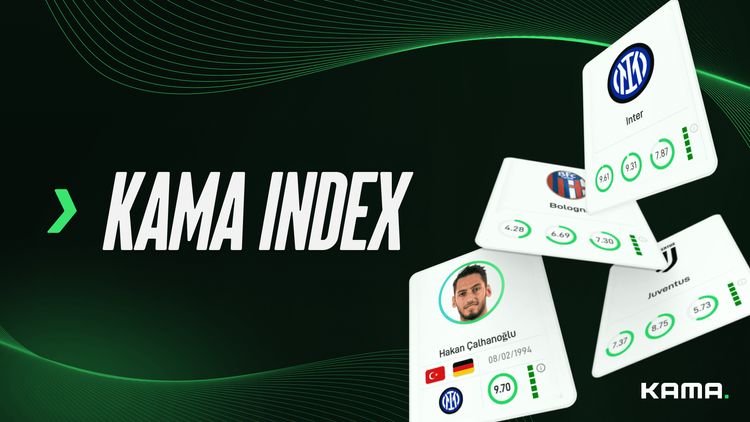Mastering Football Strategy: Introducing Kama Team Labels

In recent times, the use of analytics has been a prevalent practice in the world of sports with several goals: Its utilization can lead to improved team performance, optimization of athlete fitness potential, and broadening one’s understanding of the dynamics of the game.
In football, extracting the full value of data and analyses is extremely complex, mainly due to the vast number of outcome possibilities and the intrinsically volatile nature of the sport itself. To get a better understanding of the comparative complexity of football, let’s compare it to another popular sport, basketball, where analytics have been consistently utilized for decades. 10 players compete on a 15m x 28m court, with a time limit of 24 seconds per play. On the other hand, football is simultaneously played by 22 players on a 105m x 68m, without any time constraints in terms of offensive/defensive transitions. This disparity is reflected in the sheer number and complexity of the statistics that can be extracted. And as comprehensive as they may be, football statistics are often difficult to interpret and there is always the risk of misinterpreting the data at hand.
At Kama, we fully understand the complex nature of this issue all too well. Therefore, we have made it our purpose to not only provide all the tools necessary to effectively conduct football analysis but to guide and support users by helping them take advantage of the most advanced techniques and provide them with actionable inputs that can instantly be applied and converted into practical actions.

What are Kama “Team Labels”?
Within the KAMA platform, we have introduced a new feature called Team Labels. Team Labels summarize the most impactful aspects of each team's game, allowing for the instantaneous and intuitive analysis of a team's statistics.
This game-changing functionality is made possible through the use of Kama’s unique game situations (Kama Game Sense), which creates and visualizes measurable statistics that are then evaluated for each team in comparison to its opponents.
The structure consists of three sections:
1: 'Style of play', showcases the special characteristics of the tactics adopted by a team.
2: 'Strengths', demonstrate the game situations in which a team excels over others.
3: 'Weaknesses', identify a team's deficiency or 'Achilles' heel compared to their competitors.
The 'Strengths' of a team are distributed over three different levels of value ('Top,' 'Very strong,' and 'Strong'), giving the possibility to identify a hierarchy of excellence. Similarly, 'Weaknesses’ are exemplified on a three-level hierarchy of deficiencies, ranging from “Weak” to “Worst”. This evaluation is done for both teams competing within the same championship as well as over larger groups of competition. This is done to identify individual primary strengths and weaknesses, as well as portray true standouts or underdogs.

How to use Kama Team Labels? ‘AS Roma’ use-case.
To showcase the potential of the tool and practical application, let's jump into the role of a match analyst whose team will face Roma the next day.
The role of a match analyst is to communicate to the entire staff the various aspects of the game in which they can exploit the weaknesses of their opponents and leverage their strengths to emerge victorious from the bout. The main difficulty in such situations is not knowing where to start the analysis, which statistics to focus on, and ensuring that the conclusions made are actually descriptive of the opponents' approach to the game. This is where Kama Team Labels come into play.
By looking at AS Roma’s overview, our new feature can clearly identify the team's strengths and weaknesses based on their statistical output throughout the season.
Let's start with playing style, the category that describes a team’s approach to the game. According to our tool, Roma is a team that knows how to be patient in the offensive phase and tries to control the game as much as possible. Moreover, the team is very proficient in the ball-retrieval phase, turning defense into offense through quick counterattacking play. Lastly, the labels also highlight that once they recover possession, Roma is good at keeping it, making it difficult for opponents to dictate the tempo of the game.
The strengths consistently align with the expected style of play and shed light on another aspect of Mourinho's teams: their proficiency in set pieces (both offensive and defensive, which makes Roma one of Europe's top teams in this regard, as evidenced by their performance. Turning to weaknesses, a key concern is the team's lack of aggressiveness during the opponent's build-up. This translates to fewer disruptive actions and a decreased likelihood of encountering challenges in maintaining a solid build-up. Furthermore, Kama's Team Labels also showcase that Roma has a preference for building their attacks through the centerfield, indicating that their flanks are usually less dangerous during the offensive phase.
The aforementioned analysis underscores how the new Team Labels tool facilitates a comprehensive, rapid, and intuitive analysis of a team. This tool’s use isn't limited to match analysts; it's equally beneficial for coaches, scouts, or anyone interested in delving deep into the performance intricacies of football teams. Work more efficiently and master football strategy through the power of Kama Team Labels.

About Kama.Sport
Kama.Sport is a cutting-edge software and data science company specializing in sports data, digital transformation, web services, and the 4.0 industry. Kama provides high-tech solutions that enhance the outcomes of both tactical and strategic decisions, support a team’s competitive development, and aid in their digital transition.
Kama’s all-in-one platform integrates the world’s most advanced sports data and technology to help coaches, teams, leagues, and federations structure their work and operate more efficiently. Kama’s tailored solutions allow teams to simultaneously analyze both proprietary and third-party inputs, streamlining operations and providing football teams with an edge in a highly competitive industry.
Learn more about Kama here.


